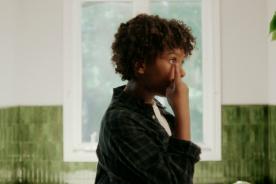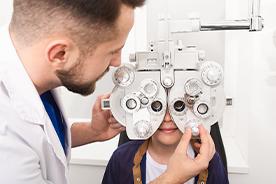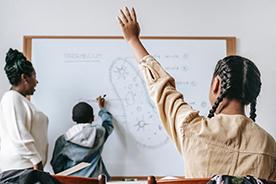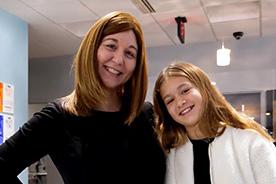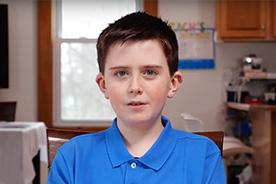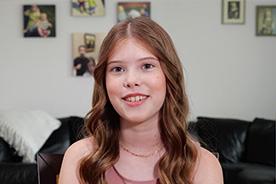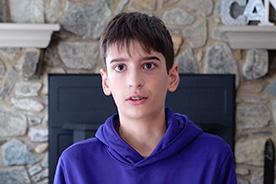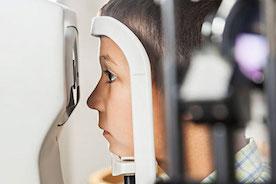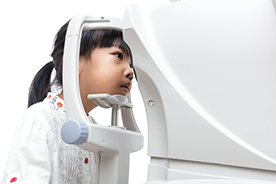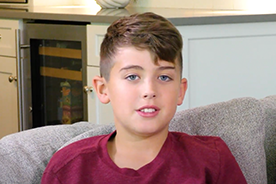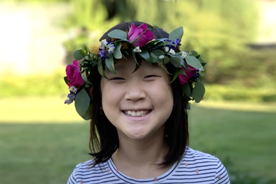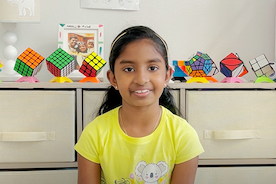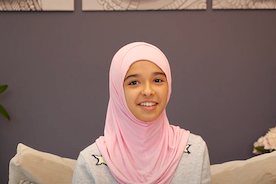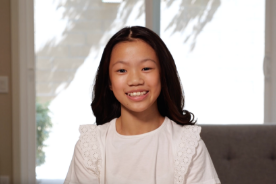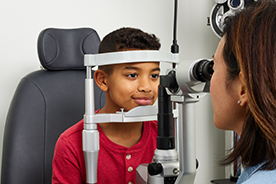The signs of myopia, or nearsightedness, can be tricky to recognize—that is, until you know what to look for. Knowledge is power! We’re here to help you spot the signs so you can protect and correct your child’s vision today and for the future.
What is myopia?
Myopia is just another name for what’s commonly known as “nearsightedness,” or vision that’s blurry in the distance while clearer up close.1 Myopia is generally caused when the eye grows too long and too fast. Less commonly, it can develop due to a steep curvature of the cornea. Both impact how light focuses in the eye, and that causes blurred vision. Myopia typically develops in childhood and progresses into early adulthood. As your child grows, so do his or her eyes, so the sooner the issue is diagnosed and controlled, the better off your child will be today—and tomorrow.2
As a parent, you’re the first line of defense. Your child could be experiencing problems and have no idea what’s causing them, or they may not even realize anything abnormal. That’s why it’s so important to recognize and understand the symptoms of myopia and make sure your child has regular eye exams performed by an eye doctor you know and trust.
Why is myopia so common?
Studies show that one of the reasons myopia in children is becoming more common is the amount of time they spend indoors on computers and near devices like smartphones.3 Getting outside and cutting back on screentime can’t cure myopia, but it can slow its progression.4 And it’s even more important to recognize the symptoms and start treatment before they worsen.5
The last thing you want is for myopia to continue to get worse, which is what increases the risks of developing more serious future problems of the eye, like glaucoma, cataracts and retinal detachment.6
Myopia can be controlled and corrected
Controlling and correcting myopia is about more than glasses or contacts. It’s about setting your child up for success in school, sports and life. And even more, it’s about helping them reduce the risk of myopia-related vision complications later in life.7 Read on for some of the obvious—and not so obvious—signs, according to the Mayo Clinic.
Myopia management: The warning signs to watch for
Some of the signs your child has myopia are straightforward: squinting, blinking, frequent eye-rubbing, holding books or devices close, frequent headaches, stating that they notice their vision is blurred and sitting too close to the TV.8 But not all the signs are so obvious.
Sign #1: Short attention span
Have you noticed your child exhibits limited attention during an activity where the focal point is at a distance? For example, they might sit to play a game or complete a school project, but become easily distracted. This can indicate that the child is having difficulties focusing because of the blur experienced when completing the activity.9
Sign #2: “I don’t want to do this anymore”
Has your child suddenly lost interest in an activity they used to love? This is common if the child is experiencing headaches or eyestrain because they can’t see well to perform the activity. And it can lead to frustration or avoidance of the activity altogether.9
Effective myopia management for your child
We all want the best for our kids, so don’t have a blind spot when it comes to proper vision care and myopia management. Be on the lookout for the obvious and not-so-obvious signs of myopia. And make sure you have a dedicated eyecare professional who can perform a comprehensive eye exam and recommend ways both to correct and control the progression of myopia.
One of these ways might be a contact lens for myopia control. MiSight® 1 day soft contact lenses are specifically designed for myopia control and are FDA approved* to slow the progression of myopia in children aged 8-12 at initiation of treatment.10† Although these daily, single-use lenses help your child see,10,11 they also help keep their myopia from getting worse too quickly.10† Whether they’re worn in class, while playing sports or just hanging out with friends, MiSight® will help your child see clearly while helping to reduce the risk of myopia-related eye health complications over the long term.12‡
Why not get started today? Click here to find an expert eyecare professional near you. The future is already looking brighter, don’t you think?




